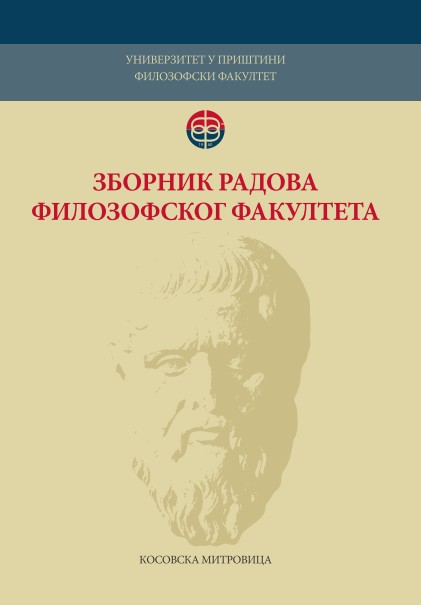Семантичке структуре глагола play и играти из угла теорије прототипа и њихов речнички приказ
Semantic Structures of the Verbs Play and Igrati from the Prototype Theory Perspective and their Presentation in Dictionaries
Author(s): Ana Halas PopovićSubject(s): Language studies, Language and Literature Studies
Published by: Филозофски факултет, Универзитет у Приштини
Keywords: prototype theory; prototypical sense; semantic structure; polysemy; dictionary; dictionary entry.
Summary/Abstract: In this paper, an analysis of the semantic structures of the English verb play and the Serbian verb igrati has been carried out according to the principles of the prototype theory as well as an analysis of the lexicographic representation of these structures in Oxford Dictionary of English (in its online version) and Речник српскога језика Матице српске (2011) as leading representatives of the lexicographic practice of the two languages. Since it has been observed that relations among senses of each of the two verbs are not all quite obvious and clear, the aim of the analysis has been to examine mutual semantic-derivational relatedness of these senses and, simultaneously, to answer the question whether semantic structures of these verbs are polysemous and, consequently, whether displaying all senses of each of these verbs within the same dictionary entry is justified. Also, the analysis has aimed at discovering how faithfully and precisely the structure and organization of entries in the two dictionaries reflect the internal organization of the given semantic structures and mutual relatedness of their senses taking into account the results of the analysis. An inventory of senses of the two verbs has been collected on the basis of their entries in the analysed dictionaries. For each sense, its derivational path has been identified including the sense which it has been derived from as well as the mechanism employed in this semantic derivation. This analysis has revealed that there are four motivated semantic networks within the semantic structure of the verb play and three such networks in the semantic structure of the verb igrati. Each of these networks includes senses which are derived from the common basic or prototypical sense directly or indirectly and, therefore, related on the basis of the family resemblance principle. The basic senses of all the networks identified within the structure of each of the verbs are also mutually related due to the fact that they share the same prototype. Hence, the identified networks, in the case of both verbs, form a unified semantic structure, which can be regarded as polysemous. This observation leads to the conclusion that the representation of these structures in the analysed dictionaries within one entry is justified. It has also been observed that the structure and organization of the entry for the verb play in the analysed dictionary of English quite precisely reflect the internal organization of the given polysemous structure since it adequately groups senses according to their semantic-derivational relatedness within the identified motivated networks and clearly emphasizes the basic sense of each network. The faithfulness of this reflection is achieved to a great extent, though not completely. However, the structure and organization of the entry for the verb igrati in the analysed dictionary of Serbian does not match the internal organization of the given polysemous structure.
Journal: Зборник радова Филозофског факултета у Приштини
- Issue Year: 51/2021
- Issue No: 4
- Page Range: 69-87
- Page Count: 19
- Language: Serbian

